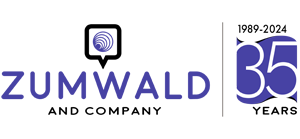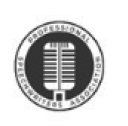Flat interviews = boring stories (here’s how to fix that)
Think about the last story you wrote.
Did you get a bunch of high-fives?
Did you hear things like, “Wow – thanks! That was such a great story!”
Or did you hear absolutely nothing?
If so, that can be telling. Perhaps the problem lies in how you interview your sources.
1. Do you settle for your source’s first answer? Remember: The good stuff always lies beneath the surface. So keep probing. Challenge your source with “devil’s advocate” questions. The first answer is rarely your source’s best answer.
2. Are you getting canned quotes or “corporate speak”? Don’t stand for it! Instead, dig in. Try picking out one word from that stilted response and ask, “What did you mean by that?” Ask for evidence; can your source prove it? Or, ask your sources to share a story that illustrates the point they’re trying to make. Avoid writing quotes from corporate folks that you’ve read elsewhere a million times before (you know what I mean – things like, “We provide high-quality products and the best customer service.”) Ask more questions so you can write something different.
3. Are you ever short on examples or struggling with weak ones? You’ll be surprised what you get if you ask, “Can you give me another reason why this is the case?” or “How else have you used this technology in the field?” And then you can ask a couple times more: “What’s another reason this happens?” This prompts your sources to think harder about what you are asking and respond with more reasons or examples, giving you more meat on the bones.
4. Are you ever stuck with just 5 or 10 minutes to interview a busy VIP? Don’t let that stop you or intimidate you. Prepare plenty of probing questions ahead of time and then prioritize them. Resolve to keep the interview on track so you don’t waste a minute on irrelevant or predictable responses you can’t use. Know exactly what you want from your source – and keep those questions flowing. (If you’ve prepared well and engaged your source in good conversation, don’t be surprised if you’re rewarded with a 20-minute interview chock full of really good stuff.)
5. Do you hear things you don’t understand – but move on anyway? Although interrupting is usually considered impolite, don’t be afraid to stop a source – midsentence if necessary! – if you’re confused or hear a term you’ve never heard before. If you don’t understand, always ask. Otherwise, you may write a story with errors. Or, you may completely misinterpret something your source said, damaging your credibility and your source’s trust in you. (Here’s a bonus: A source who explains a key point again often does a better job the second time around, allowing you to capture a more colorful response.)
6. Do you proceed from question to question – never doubling back to connect the dots? Summarizing what you just heard gives your source confidence in your ability to listen, interpret and bring meaning to the message. What’s more, summarizing gives you a moment to process and think – and ask those all-important, unscripted, follow-up questions that could help you craft a clever lead.
7. Do you use the same interview style for every person you interview? Be willing and able to quickly adapt to your source’s style. Within the first 90 seconds, listen for clues to decide how the pace and tone of the interview should go. A serious, cautious source, for example, will feel more at ease if you slow down and stop routinely to paraphrase the most important points. A high-spirited source, on the other hand, will do better if you conduct the interview in a similar, lively manner.
Remember: Great stories spring from great interviews. So take control. Make sure your interviews are giving you everything you need to tell the stories that people will read, enjoy – and remember.

















